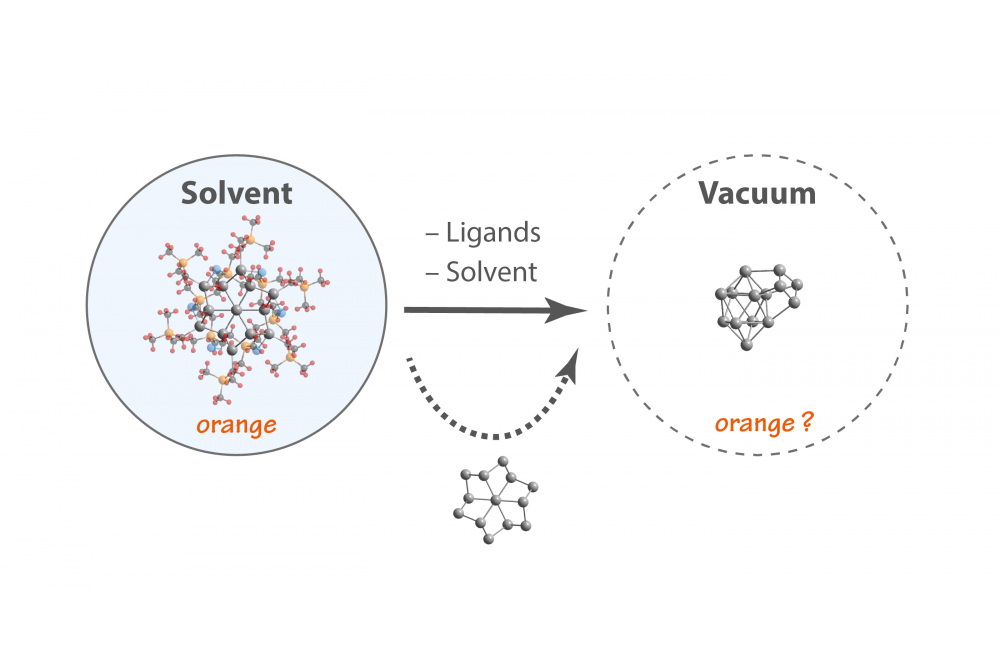Optical Absorption Studies and Quantum Chemistry of a Tin Nanoparticle
Introduction
Semiconductors are the fundament of modern technology and still in the focus of current research. With decreasing size, dielectric and opto-electronic properties change significantly and the investigation of materials at the subnanoscale becomes crucial as well as fascinating. For ligand-stabilized clusters in colloidal systems it is possible to study these properties with nowadays standardized methods. The investigation of the dielectric and opto-electronic properties of clusters in the gas phase isolated from the chemical environment, however, is still lacking a thorough study. Therefore, extensive molecular beam experiments need to be conducted to probe their structural and electronic features. Although both approaches - gas phase and colloidal solution studies - examine the same research objects, little is known about to what extent results from gas phase studies can be transferred to colloidal systems and vice versa. Thus, with this project we aimed to understand how ligands influence the geometric and electronic structure of such clusters by comparing these results with our molecular beam experiments of bare tin clusters in a joint experimental and theoretical work.
Methods
Energetically-favored geometries were generated using a Density Functional Theory-based Genetic Algorithm developed in our group. Frequency calculations verified the global minimum structures of both the ligand-stabilized and bare tin clusters employing the LC-ωPBEh/def2-TZVPP and PBE0/cc-pVTZ-PP level of theory both for the ground state DFT and excited state Time-Dependent DFT. The solvatochromic shift in case of the ligand-stabilized cluster in solutions covered by means of the vertical excitation model within the framework of Time-Dependent DFT. The absorption spectra are further analyzed by a molecular and natural orbital analysis making extensive use of symmetry considerations.
Results
For the first time, a thorough comparison between an isolated and a ligand-stabilized nanocluster was performed. The unexpected similarity in the absorption spectra of the isolated Sn14 cluster in the gas phase and the ligand-stabilized nanoparticle in solution with the same amount of tin atoms can be successfully tackled by taking into account an interplay of various physicochemical phenomena. Ligands have been found to stabilize the highly symmetric topology of the cluster and cause a considerable shift in the onset of the absorption cross-section, which to some extent cancels the solvatochromic shift imposed by the polarity of the present solvent. The lowered symmetry of the isolated cluster is shown to further smear the intense absorption characteristics found for the bare tin cluster fragment without ligands.
Discussion
The extent to which this observation is transferable to other cluster systems such as for example silicon and cadmium selenide, already playing a central role in the semiconductor industry, must be shown by future investigations. It is of fundamental interest to study both the impact of charge, i.e. cationic tin clusters of the same size and doping effects. A strong emphasis is also put on opto-electronic experiments studying ligated clusters in the gas phase.




